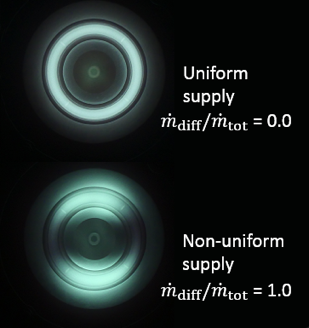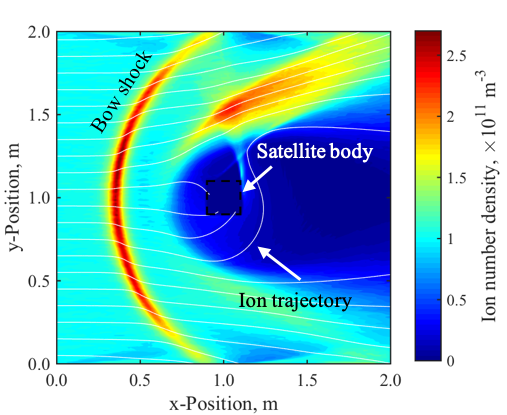
|
Find Out New Plasma PhysicsLearn more about Hall Thruster Research |
Compete in Computer SimulationLearn more about Numerical Simulations |
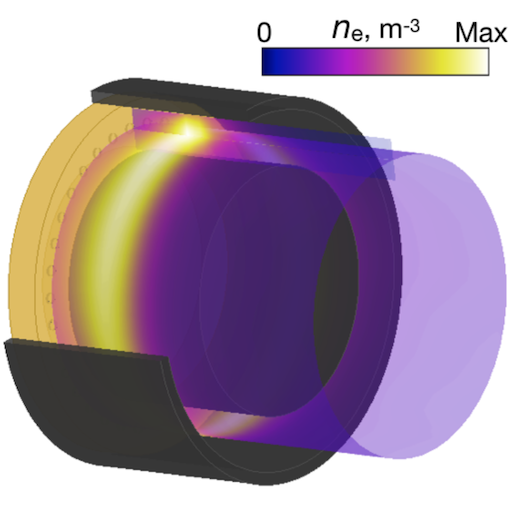
|
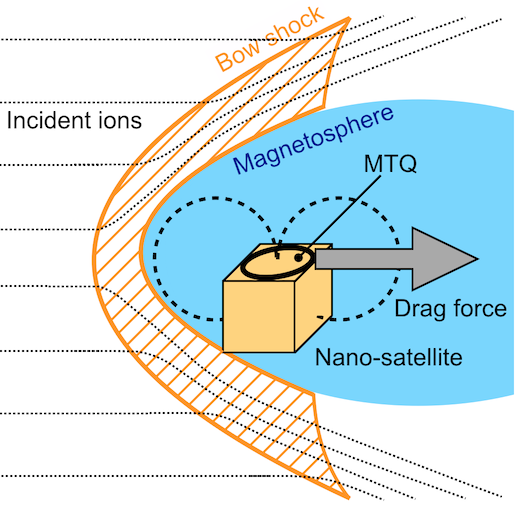
|
New TechnologyLearn more about Magnetic Plasma Deorbit |
Hall Thruster Research
|
|
Basically, Hall thrusters have an axisymmetric geometry, but there are plasma oscillation phenomena propagating in the azimuthal direction. These plasma oscillations have been concerned as they would be related to the cross-field axial electron transports. The basic principle of Hall thruster is to induce the azimuthal Hall current by the ExB drift of axial electric field and radial magnetic field. Based on the same physics, if an azimuthal electric field is generated by the azimuthal plasma oscillations, an electron flow is induced in the axial direction (toward the anode). The induced electron current in the axial direction results in the increased power consumption. |
|
How do the azimuthal plasna oscillations evolve, and how do the azimuthal electric fields affect axial electron transport? Elucidation of these mechanism is necessary for better understanding and performance improvement of Hall thrusters We investigate azimuthal plasma physics and cross-field electron transport from both the numerical simulation and experiment. Numerical and linear stability analyses are used on how azimuthal plasma oscillations are induced. Regarding the effect of azimuthal plasma distribution on axial electron transport, we are doing a unique experiment. Azimuthal inhomogeneity in plasma property is artificially formed by applying azimuthally nonuniform propellant supply or magnetic flux density. The effects of these artificial nonuniformities on azimuthal plasma property and thruster performance are measured. |
Numerical Modeling of Hall Thrusters
|
Hall thruster designing has entered the phase of computer-aided-engineering (CAE), and high-fidelity simulation technology is indispensable for the development of high-performance thrusters. Owing to the axisymmetric geometry, the Hall thruster discharge has been conventionally simulated by axial-radial 2D models. However, recent studies have shown that the plasma turbulences/oscillations in the azimuthal direction have significant influences on the discharge behavior. |
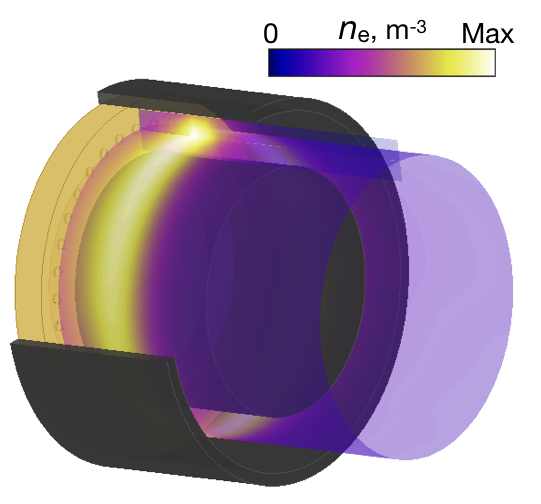
|
|
Our numerical simulation is featured by the electron transport model that incorporates the azimuthal physics. Modeling of azimuthal plasma oscillations would be the key to obtain the electron transport property crossing the magnetic field lines. The azimuthal plasma oscillations are investigated by linear perturbation theories as well as numerical simulations. The electron transport characteristics obtained by the azimuthal oscillation analysis are reflected to axisymmetric plasma models for thruster performance predictions. By coupling the axial-azimuthal and axial-radial 2D simulations, we are trying to achieve a Hall thruster discharge simulation with the self-consistent electron transport model. |
Magnetic Plasma Deorbit
|
|
A number of nano and miscrosatelllites were successfully launched for various types of missions. Most of these satellites are used in the low earch orbit (LEO), and the issue of space debris is concerned. To prevent these satellites being space debris, a deorbit method for nano and miscrosatellites is required. We proposed a new technology called the Magnetic Plasma Deorbit method that uses a drag force by orbital plasmas. This method uses a magnetic torquer (MTQ) for attitude control to make a magnetic field. |
|
A plasma drag force is generated by the interference between the magnetic field and plasma flow surrounding satellite. The big advantage of this method is that no additional component is required for deorbit, because this method just uses an MTQ that is already installed on the satellite. We are conducting numerical simulation of the plasma flow surrounding a satellite and its magnetic field to examine the effectiveness of the magnetic plasma deorbit. The left figure shows a typical simulation result of ion (O+) number density. A bow shock is formed in front of the satellite, and a plasma cavity region appears behind the shock wave. The trajectory of ions approaching to the satellites is delected by these structures. The plasma drag force is generated on the satellite as the counter force of the ion deceleration. We are investigating on how to increase the plasma drag force to achieve a fast deorbit of nano and miscrosatellites. |
